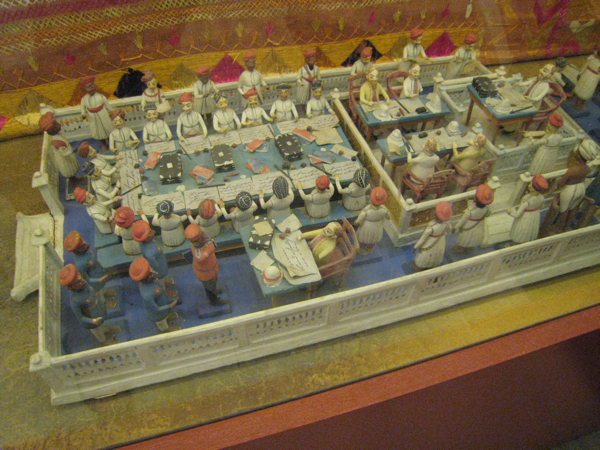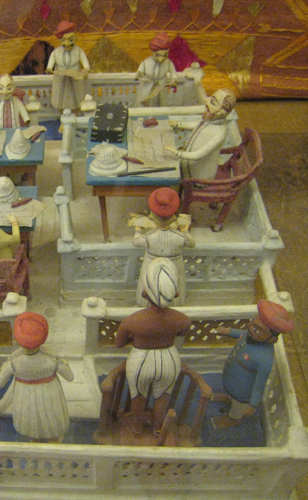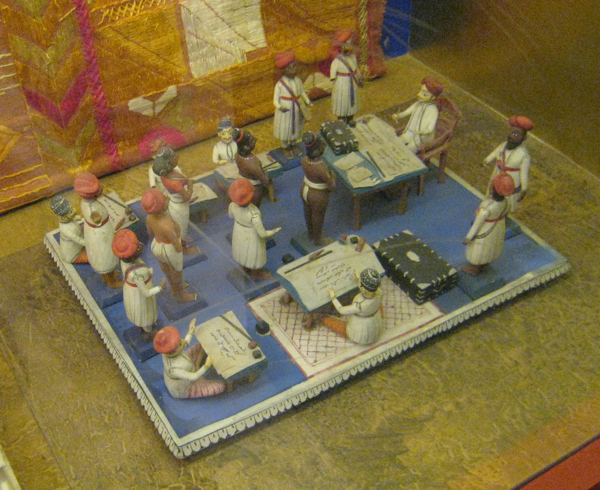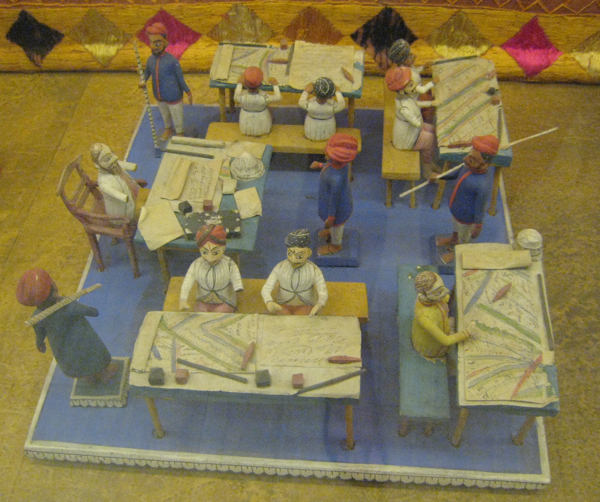While I was in New Mexico last weekend, Sharon and I drove to Santa Fe. The town has many museums, but we visited only one: the Museum of International Folk Art. It’s not big, but offers plenty to keep the attention. One room has drawers full of decorative panels from Bangladeshi rickshaws, and molé cloth work.
Most fascinating to me was the Girard Wing, created from the personal collection of a bi-cultural globetrotter whose taste in funky objects I completely concur with. It’s an enormous room crammed to bursting with toys, figurines, masks, and tapestries, arranged according to some interior logic of the donor, which doesn’t always make sense to the outside observer. Girard didn’t believe in labels, and I can see his point: I get distracted reading the text instead of observing the object it describes. So he put discreet little numbers on the cases, corresponding to a catalog with one terse paragraph of description per case. This was very frustrating at times – you’re left wondering: “Where is that thing from? What does it mean? Why does this mask show a person with pursed-out lips with a lizard climbing down his nose?”
And: “Why does this 18th-century Bengali story-teller’s scroll illustrating the life of Krishna feature (Indian) people and gods dressed for the French royal court in knee pants, hose, and big wigs?”
We weren’t sure if we were allowed to take photos (though there weren’t any signs saying otherwise), but I couldn’t resist snatching some shots of these.
The catalog inadequately explained that they are from Bengal, and represent scenes of the workings of the British empire – intended as educational toys, perhaps to show Bengali children the (limited) jobs that would be available to them in the British bureaucracy.
At the top of the page you can see a higher court in full session. Aren’t these guys wonderful? Look at the detail of their moustaches and beards, and the little white pith helmets on the table.
Below is a detail showing the British judge in his white jacket, with the plaintiff in the white dhoti and turban in the foreground, under the watchful gaze of a guard in blue.
Below, I think, is a low-level magistrate’s office with a “native” judge. I’m guessing from their loincloths and hairstyle that the plaintiffs are tribal people.
^ Here’s a surveyor’s office, everyone busily drawing maps – except their British supervisor (who appears to be a close relative of the judge). There’s even a guy with a rod, ready to go out and take more measurements.





That is wonderful to see and read. Particularly for me, a genuine Bengali who is still learning and struggling with British bureaucracy even after working inside it for so many years! I’m going to link to this article in my blog 🙂
Deirdre –
these are wonderful! Are you familiar with the *TasveerGhar* website that has popular culture items like calendar art and greeting cards etc.
A good reason to go to Santa Fe!
mwc
These are marvelous — confirming the wisdom of NEVER passing up a museum of folk art, but to find this treasure in New Mexico . . . also confirms that as-the-world-hrinks is the new longest running soap opera!
Just back from a too-brief gita up to the hometurf of Maine, and tested the great waters at Rossella’s flog — how great is that! Ella’s going to write to her soon — she’s off to college on Saturday, and most of her home pals have already head off, so her thoughts have turned back to Woodstock.